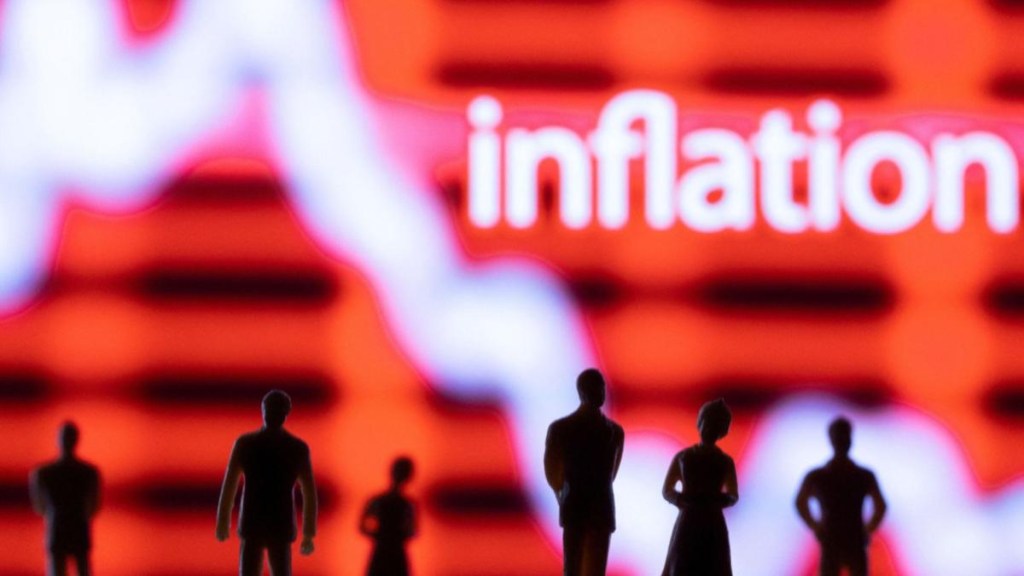India’s retail inflation based on the Consumer Price Index (CPI) likely eased to a four-month low of 5% in February from 5.1% in January, mainly due to the statistical effect of a high base and declining prices of vegetables, going by the median of a poll of 17 economists. CPI inflation in February 2023 was 6.44%.
At the projected rate, the overall index likely inched up merely 0.1% sequentially. This was primarily due to month-on-month rise in prices of some key food and non-food items during February. The National Statistical Office (NSO) will release the February CPI data on Tuesday.
According to the Centre for Monitoring Indian Economy (CMIE), food inflation likely ebbed to 7.9% in February from 8.3% the previous month. This is mainly due to a fall in the inflation rates of milk, spices, fruits, vegetables and cereals. Data sourced from the Department of Consumer Affairs show that onion prices fell 14% on month, potato prices declined 3%, and tomato prices eased by 0.3%, in February.
But prices of cereals, on the other hand, rose by 0.3%, meaning the inflation falling during February is a consequence of the high base. In January, the inflation of ‘cereals and products’ – carrying a weight of 9.67% – came in at 7.83%, and in February 2023, the subgroup’s inflation was at 16.73%.
Core inflation, on the other hand, is expected to have stayed flat at 3.6% in February as compared to January, say economists. The January’s core CPI print was the lowest in 50 months.
Barclays’ economists, however, say that core CPI inflation likely rose 0.5% on month, driven by an increase in housing prices. “Personal care and effects inflation is likely to be the other contributor, factoring in a seasonal sequential increase,” the economists said in a note.
HDFC Bank Principal Economist Sakshi Gupta said that the increase in housing rentals, which constitutes the majority of the housing index in the CPI, is not getting reflected in the inflation prints. “The rise in rent prices, at an aggregate level, doesn’t seem to be the case for all-India, and that has been the case for the last six months,” she said. In January, housing inflation was at 3.2% as against 3.63% in December.
Furthermore, ‘fuel and light’ inflation is seen remaining delationary in February as well, with most items in the group noting no change in prices during the month. In January, the ‘fuel and light’ inflation was at (-)0.6%, which is expected to marginally ease to (-)0.7% in February, say economists.
In the coming months, the headline CPI trajectory would be determined by food inflation – where risks are “evenly balanced”, say economists.
“With erratic weather conditions, we see some upside risk to food inflation. While supply side intervention by the government has helped cap prices, we remain concerned on the stickiness of elevated cereals and pulse prices,” said Upasna Bhardwaj, chief economist, Kotak Mahindra Bank.
According to the first advance estimate (FAE) of production of horticultural crops in the 2023-24 crop year (July-June), Onion output is projected to fall 16% year-on-year to 25.47 million tonne (MT) in the current crop year. Potato output is estimated to decline by 2%, while tomato’s production is seen rising marginally on year.
“The shortfall in the output of onion is clearly going to have a bearing on the commodity’s prices, but the impact on food inflation may be short lived as supply should resume in the next cycle,” said Bhardwaj.
The FAE shows that India’s overall output of horticultural crops consisting of fruits, vegetables, spices, medicinal plants declined marginally to 355.2 million tonne (MT) in 2023-24 (July-June), marginally lower than 355.4 MT output recorded in 2022-23.

